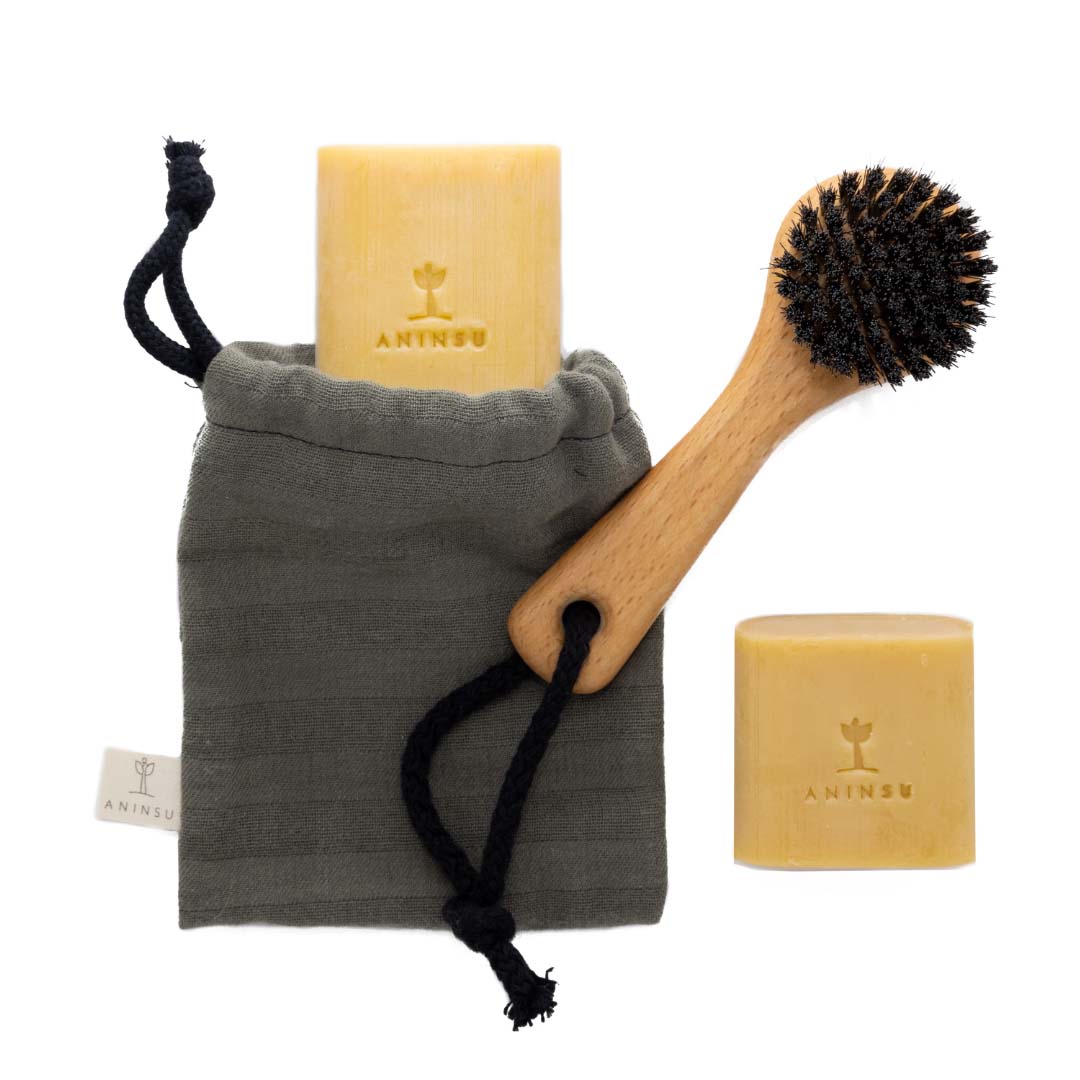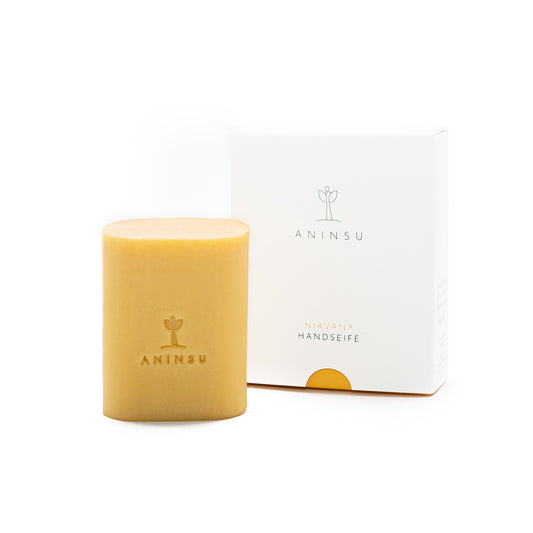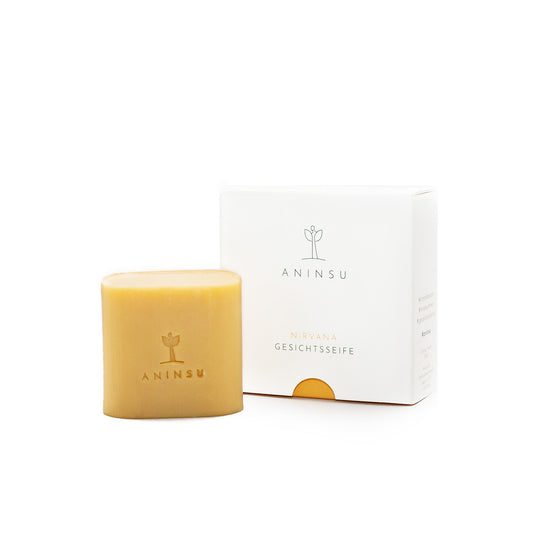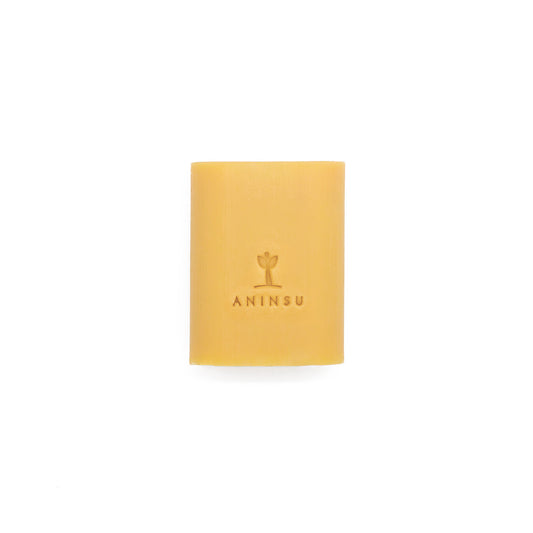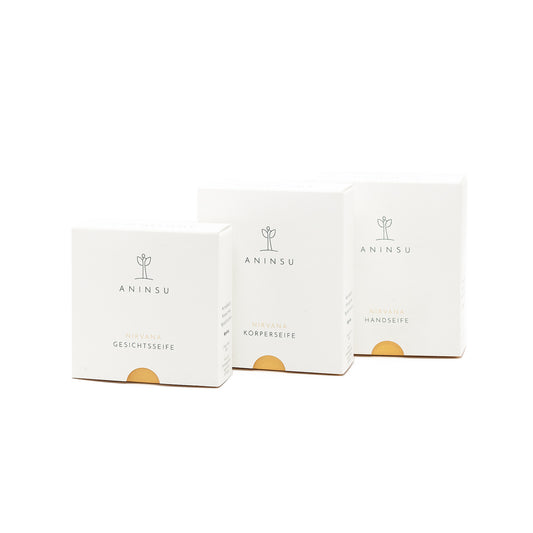I'm sure we can all agree that soap is great. In order for it to remain great, we should store it appropriately before use and also store it appropriately during the period of use.
Before use
As so often, the packaging matters. If we buy soap wrapped in paper, then everything is fine: we can store the soap in the paper wrapper. The only important thing is that it should be in a dark and naturally dry place, e.g. B. in a cupboard in the bathroom. Alternatively, many people put the soap in the closet and also benefit from the fact that it smells nicer in it. However, it is not advisable to store too many different-smelling soaps in this way so that there is no "fragrance cacophony".
But what if the packaging isn't paper? It is of primary importance for the soap packaging that the soap can "breathe". Airtight packaging types can cause the soap to start sweating at some point. Normally this shouldn't happen with packaged soaps. However, if we are unsure, e.g. B. because the packaging seems to be made of airtight plastic or because we bought the soap unpackaged, then there are several possibilities:
Food grade paper
What the soap is always happy about is food grade paper. This is available in specialist shops in the form of larger sheets that can be cut to size, or in the supermarket as sandwich bags, for example. There are often different sizes in the handicraft store, but you should definitely make sure with the seller that the paper or paper bags in question are food-safe and therefore do not contain any chemicals or other substances that you do not want on your soap.
Cellophane
We can store soaps wrapped in cellophane at any time. Cellophane, cellophane or cellophane is a plastic that is made from renewable instead of fossil raw materials. Pure, ie uncoated cellophane can be composted or given to waste paper. This film is reminiscent of plastic, but it is significantly more environmentally friendly. We find cellophane bags of various sizes e.g. B. in craft stores. Attention: Always make sure that it is pure cellophane, i.e. without any plastic coatings, which drastically reduce the environmental friendliness of this material.
During usage time
For soaps in use it is very important that they are allowed to dry very well in between so that they do not become soft and soggy. This is particularly the case with natural soaps, because these in particular do without a lot of stuff that you don't actually need in your soap. That said, a soggy, greasy soap can actually be a very good sign of product quality. However, it is evidence of less than optimal storage and also waste, because the soggy soap residues are usually not used. So what are the options?
Soap dishes and trays
The classics are of course bowls and shelves that are specifically designed for storing soap. They come in all shapes and sizes and are made of all kinds of materials. Whether made of ceramic, plastic, concrete, metal, enamel or something else, like the design, is primarily a matter of taste, whereby one should opt for an environmentally friendly variant if possible. However, there are some features that the shelf or bowl should have.
It is particularly important that the shelf is not just flat, because the back of the soap will usually remain wet after use and this is what needs to be prevented. It is best to have a tray or bowl with enough grooves on the tray side and high enough to ensure that the soap gets enough air from underneath. In addition, drainage holes are of immense advantage, in the best case the shelf is also inclined towards these holes so that any dripping water from the soap can drain off easily.
There are also soap dishes made of natural materials, e.g. B. Silal. We will tell you more about this material below under the soap bags.
Magnetic holder with and without suction cup
A highly recommended way of storing soap in the bathroom, be it on the sink or on the bathtub or in the shower, are magnetic holders. They consist of two parts: a magnet that you attach to the wall, basin or tub, and a metal plate that you push into the soap. So you can attach the soap to the magnet immediately after use and it can dry optimally. The magnets are also available with a suction cup, so you don't have to drill them into the wall if you want to avoid that.
Soap pouch
A storage option that we highly recommend for the shower is soap bags. There are two different options: either you use the soap bag for soap leftovers in order to use them up comfortably, or you use it for your regular shower soap. When it comes to soap bags, there are usually sisal ones, and while we love this material, the products are often made in Asia, which means their carbon footprint is rather poor. Sometimes one comes across sisal products from southern Europe, e.g. B. Spain. In any case, we prefer this. In addition to sisal bags, there are also some made of jute or similar materials. One thing these products have in common is that you also have a peeling effect when you wash them, because these fabrics are often rough. There is no doubt that peelings are great, but a peeling treatment every 1-2 weeks is sufficient. More frequent applications of this type are counterproductive for the skin, since its protective barrier is unnecessarily often stressed. That's why our recommendation goes in the direction of soap bags made of pure cotton. By the way, a special highlight when using sachets: the soap often foams significantly more!
Conclusion
A great soap is a fine thing and it is all the more important to ensure that you handle your soap product with care when storing it before and during use. You extend the longevity or yield if you let it dry properly and there is no mush in the soap dish. Of course, this is also good for the environment, because you don't have to buy new soap as often. So the bottom line: optimal storage of the soap is just as important as its caring properties!
